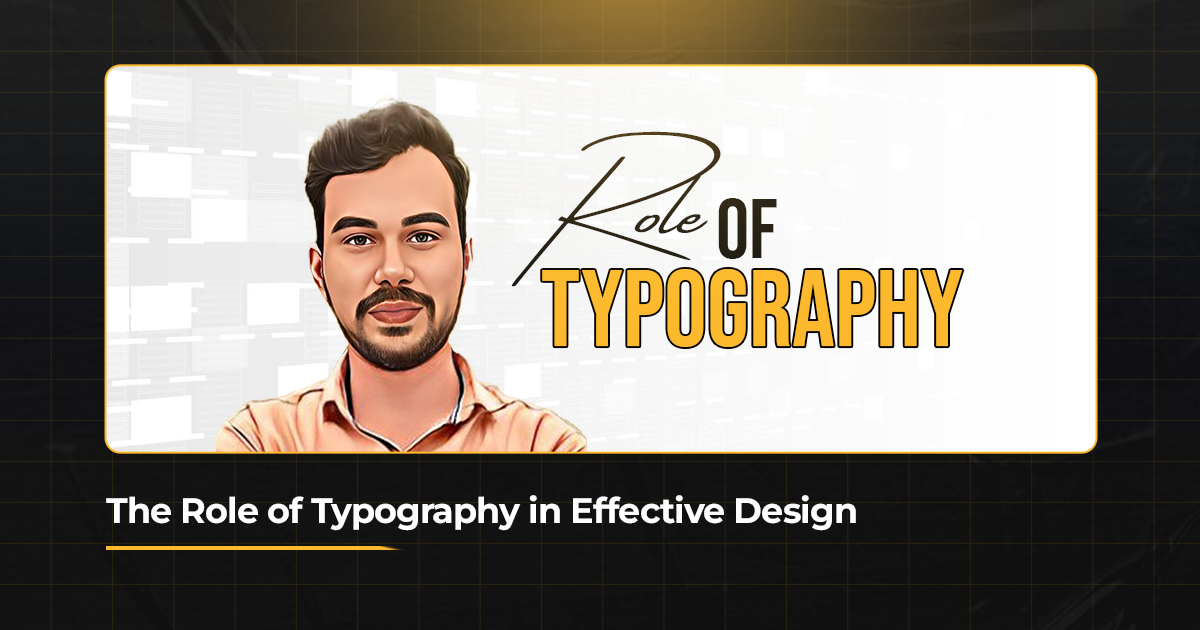
The visual appeal, legibility, and readability of texts greatly depend on the arrangement used, which is referred to as typography. This process is one of the crucial aspects of a graphic design as it impacts how people communicate, understand, and remember information. This article includes factual information and research to show how effective design cannot happen without typography.
Also Read: Graphic Designing: Career Opportunities in Pakistan
What Exactly is Typography?
To get a message through ideas that get conveyed via messages, logos or mediums typography uses typefaces, snapping sizes, lengths, and spacing. It is notable to understand that typography goes beyond simple appealing designs to better stand as a functional tool that adds clarity, a hierarchy of emotions, and flow.
Important Elements of Typography
- Typeface and Fonts, which include Serif, Sans-Serif, Script and Display are the graphical styles that indicate the visual form of characters.
- Hierarchy is the placement of all text elements in a certain order to guide a reader’s attention span.
- Alignment is the repositioning of text formats: left or right, vertically, centrally or justified.
Another important aspect of typography is spacing, which consists of kerning (letter spacing), leading (spacing between lines) and tracking (spacing between groups of letters).
The Role of Typography
- Improving Readability
Typography refers to the readability of the message. Selection of a typeface and its spacing makes it easy for the content to be reached by the audience.
For instance: Arial and Helvetica are examples of sans serif fonts used on screens as they are easy to read.
It’s a fact: Studies on typography have shown that comprehension levels can be raised by factors up to 20 whenever types are legible.
- Determining Visual Hierarchy
On the other hand, typography may create visual hierarchy structures which facilitate the movement of the eye across content. Treatments can vary on the key elements cooked up by designers in font size, weight, and color.
For example: Relations in which body copy is comparatively smaller and uniform to an even greater extent than the normal type size, the head, which is set in bold type often very much larger than the body copy.
Insight of the Industry: According to Nielsen Norman Group, users will look at content with an “F-pattern”, which depicts how they will often focus on the bold text or any conspicuous text.
- Communicating a Company’s Brand
The right tone of voice helps build a strong brand, and typography plays an essential role in that.
For Example: Times New Roman has been associated with a classic, trustworthy look, but Futura may be seen as a stylish, modern font with a more straightforward aesthetic.
In fact: Studies have shown that unified typography design elements for brand materials promotes the brand with recognition reach of 80% and above.
- Eliciting Effect
Typography as a tool can elicit affects and sentiments towards any message. The typeface’s choice, style and any arrangements go a long way to determine the audience’s perception of the content.
Illustration: Handwriting and scripts can instill a delicate or personal touch while bulging types can bring a more thriving and bordering ironing tone.
Also Read: How Graphic Designers Can Improve Typography Skills
Employments of Typography in Different Disciplines
- Designing of Websites
Over the years, the importance of typography in web designing has expanded to the degree that it is critical to the use and appearance of a site. Progressive web typography guarantees text always remains readable regardless of the device.
Fact: Adobe’s research revealed that 94% of people’s first impression of a site is based on its layout, something that typography greatly influences.
Advice: Use of ems or rems by web designers is commonplace to avow text clarity across different devices.
- Newspapers and Magazines
In print design, typography plays a crucial role in how information on books, magazines, brochures, and posters is organized.
Fact: Much of the print material’s body text appears to utilize serif fonts more than the other font types. This is primarily because serif fonts are easier to read in lengthy pieces of writing.
Illustration: If the text is consistently spaced and arranged, the design will appear more polished and professional.
- Sales and Promotional Campaigns
Whether it’s branding or any advertisement, typography plays a significant role in enhancing the content’s look and effectiveness.
Example: The already classic Coca-Cola brand enhanced its nostalgia using its signature script font.
Industry Insight: For advertisements to catch an audience’s eye, the text must be legible at a minimal glance.
- Typography Video
When we talk about typography videos it usually includes a new element which is animated text and these new elements make videos and presentations more engaging.
Fact: The kinetic typography (moving text) can boost engagement by up to 60% in digital campaigns.
Example: Clean bold typefaces are used on subtitle cards and on title cards to make it more legible.
Best Principles of Typography
- Readability
The soul of typography is to allow the audience to have a smooth reading session without straining themselves. To achieve this, the designers need to select typefaces and different layouts for the design.
- Contrast
Contrast can be very useful when dealing with text, for it adds enhancing and differentiating tones.
Example: Bold body text alongside thin headlines creates balance.
- Bear in mind the importance of Consistency
In a project, typography consistency erases confusion and instills professionalism.
Application: Using the same typeface and font size throughout the corporate presentation increases reliability.
- Scalability
Text should remain clear and legible regardless of format or device. Designers employ responsive typography to achieve scalability of elements in digital media.
- Alignment and Balance
Text alignment is also a crucial element in promoting the overall harmony of the design. Alternatively, content with poor alignment will have a low content flow and readability too.
Typography Trends in Modern Design
- Variable Fonts
Variable fonts are more flexible in weight and style and width options giving designers the chance to use one font for multiple purposes.
- Minimalist Typography
Even though things have changed where simplistic clean typography is getting popular, especially for those into digital designs as it is much easier to use and considerate of the users.
- Custom Fonts
More and more companies are willing to use bespoke fonts in order to develop their stance for differentiating purposes in saturated markets.
- Typography in 3D and Motion
Animated and 3D text designs are also becoming more common, especially when used in video and social media contexts.
Since Typesetting: Designing for a New Era
Typography takes quality and attributes to the next level, thanks to the technological evolution we are experiencing. The ways in which a text can be edited with software such as Adobe Illustrator, Adobe XD, and Figma are limitless.
Fact: In total, there are more than 1,400 different fonts available on Google Fonts which designers can take advantage of and revolutionize their Projects.
Conclusion
It is fair to say that typography is more than just a design feature; it is an instrument that cumulates content with communication. Designs are made customizable and interactive to the user while visual coherence authorizes emotion for the brand and the user interaction.
In this technologically driven world the first impression an audience experiences tends to be the lasting one, and effective design through typography tends to be the centerpiece around that. Learning and implementing the fundamentals of design is highly advantageous as it allows even the most basic pair of model pants to advertise effectively and with supreme power. Creative storytelling for a business is good typography in any language.

